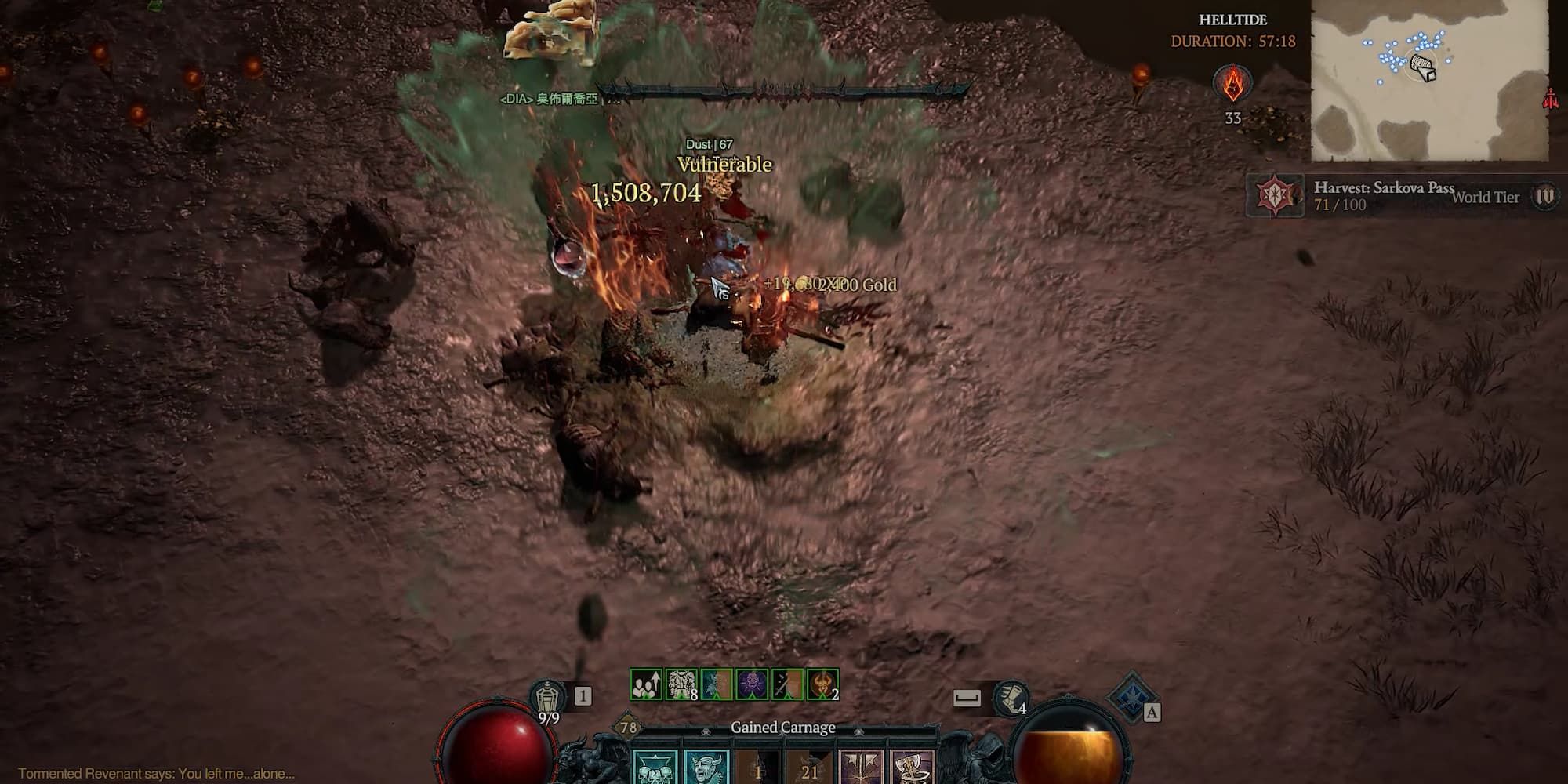Beyond the hordes of demons, flashy abilities, and shiny loot, Diablo 4 is, at its very core, a game of numbers. Everything players do in this game is all about making their numbers bigger, whether it's their level, money, highest-clearable Nightmare Dungeon, and so on. All of these are ultimately determined by how much damage players deal.
Even before the game's official release, the Diablo 4 community has been hard at work trying to determine how damage is actually calculated. After rigorous testing conducted by many players across the globe, everyone appears to have agreed that damage is grouped into "buckets," which effectively limit how big damage numbers get while simultaneously expanding build diversity. Here's how it works.
What Are Damage Buckets, and How Do They Work?
A damage bucket is essentially a category of damage sources that all stack together to form one big multiplier. There are a ton of different stat modifiers in Diablo 4, and all of them are separated into these categories to keep damage numbers from reaching astronomical values—at least, that's how the theory goes.
A player named SnowRaven created a publicly-available Google spreadsheet that contains all the damage modifiers in the game sorted according to the damage bucket they belong to. Since this is still just a theory, this article will be updated when more information is proven or discovered.
According to the tested info, there are five damage buckets:
- Main Attribute (Strength, Dexterity, Intelligence, Willpower)
- [x]% Damage (includes Skill Damage)
- Crit Damage
- [+]% Damage (includes "Damage vs.," Damage while," and "Damage with" affixes)
- Vulnerable Damage
The damage players deal is directly proportional to the weapon they are using. It is then multiplied five separate times based on the damage buckets above. Modifiers that fall in the same category are added together to form a larger multiplier. Attack speed technically counts as its own independent damage bucket, though it affects the frequency at which damage is dealt rather than the intensity of it.
For example, assuming that all damage buckets provide a 10% bonus each, an attack that deals 100 damage will instead deal 165 damage. This is not representative of how damage is actually calculated in the game, and it serves only to visualize how damage buckets may interact with each other.
A good rule of thumb when gearing up is to focus on stacking damage modifiers that are either non-conditional (Main Stat, Vulnerable, and Critical Strike Damage) or have conditions that are easy to achieve (Core Skill Damage, Damage vs. Crowd-Controlled, etc.).
Turning on advanced tooltips is highly recommended, as it lets players know if an item's affix provides additive or multiplicative damage. This should make sorting through loot easier until players become more familiar with what stat falls under which bucket.
Also, it's worth noting that some Aspects and skills seem to count as their own damage bucket. The Necromancer's Aspect of Serration appears to act as a separate damage multiplier instead of adding on top of existing Critical Strike Damage stats. It's unclear if this is an intended interaction, but it's something to keep in mind.
Diablo 4 is available now on PC, PS4, PS5, Xbox One, and Xbox Series X/S.


